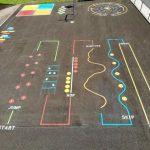9 Ways to Make Learning Visible in the Classroom
Learning is a dynamic process that can be enhanced when made visible in the classroom. When students can see their progress and understand their learning journey, it fosters a deeper understanding and engagement. Here are nine ways to make learning visible in the classroom:
1. Set clear learning goals: Clearly communicate the learning objectives to the students at the beginning of each lesson or unit. This allows students to know what they are working towards and how their learning progress will be measured.2
2. Use formative assessment strategies: Frequent checks for understanding during lessons help teachers identify gaps in learning and provide timely feedback to students. This can be done through quizzes, exit tickets, or class discussions.
3. Provide descriptive feedback: Instead of simply giving grades or scores, provide meaningful feedback that focuses on students’ strengths and weaknesses. This helps students understand their progress and areas for improvement.
4. Encourage self-reflection: Incorporate opportunities for self-reflection in the learning process. This can be through journaling, goal-setting exercises, or structured reflection prompts. Encouraging students to reflect on their learning helps them take ownership of their progress.
5. Display student work: Showcase student work around the classroom to celebrate their achievements and create a visual representation of their learning. This can be through bulletin boards, digital displays, or portfolios.
6. Use interactive whiteboards or digital tools: Utilize technology to make learning more interactive and visually engaging. Interactive whiteboards and digital tools allow students to actively participate in lessons and make their thinking visible to others.
7. Implement collaborative projects: Assign group projects or activities that require students to work together and demonstrate their understanding. Collaborative projects promote peer-to-peer learning and allow students to see different perspectives.
8. Use graphic organizers or mind maps: Graphic organizers and mind maps visually represent the connections and relationships between different concepts. These visual tools make learning visible by organizing information in a clear and structured manner.
9. Celebrate mistakes and growth mindset: Create a classroom culture that celebrates mistakes as opportunities for learning. Encourage a growth mindset where students understand that their abilities can be developed through effort and perseverance.
By implementing these strategies, educators can ensure that learning becomes visible in the classroom. When students can see their progress and understand their learning journey, it leads to improved engagement, deeper understanding, and ultimately, academic success.


